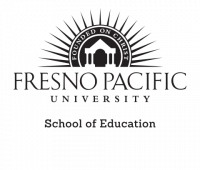By Doug Hoagland
Two Fresno Pacific University faculty members traveled to Peru in February to promote teaching math for social justice. The concept is deceptively simple: students will be motivated to learn math if it helps them address societal issues they care about.
Manjula Joseph, Ph.D., program director for the Master of Arts in Mathematics Education, and Alice Keeler, M.A., faculty in the program, made the trip to Lima, the capital of Peru, for a visit organized by EdTech Latam, which works in Latin American countries to support professional education for teachers. There they told teachers there about FPU’s pioneering efforts in the San Joaquin Valley with the concept of math for social justice.
“We talked about how it leads to more creativity in teaching and brings out the joy of learning in students,” Joseph says. Adds Keeler: “It inherently makes math class more engaging and meaningful, promotes critical thinking and develops soft skills such as communication that are valuable for employees.”
In the San Joaquin Valley—where many social justice issues persist—using math to address real-world problems offers exciting possibilities in classrooms. “It’s a long overdue and much-needed revolution in math education,” says Jeremiah Ruesch, who earned a master’s degree in math education at FPU. For too long, math education has asked students to memorize formulas with no context for their applications, says Ruesch, a former high school math teacher and now a math/science consultant for the Kings County Office of Education. “Teaching math for social justice flips the script and allows students—especially from marginalized communities—to see that math has a purpose and gives them a voice to have quantitative conversations around qualitative experiences.”
Mathematical modeling
At FPU, Joseph and Keeler bring expertise to their students. Joseph did her doctoral work on teaching math for social justice, and she developed and teaches a graduate course appropriately called Teaching Math for Social Justice. Keeler, who started her career teaching high school math, has expertise in Google Classroom, writes a blog (Teacher Tech with Alice Keeler) and has authored seven books on teaching with technology. She taught an FPU graduate course in mathematical modeling, the process of using math to solve real-life situations.
Keeler travels internationally to lead professional development sessions for teachers, and her contacts led to an invitation for her and Joseph to speak in Peru. “The teachers had a lot of questions because this is an idea they had not encountered in any of their teacher training courses,” Joseph says. Adds Keeler: “They’re hungry to help improve the educational system and the lives of their students.”
Teaching math for social justice is possible from elementary to high school, though the complexity of issues will vary. It begins with teachers talking with students about what matters to them. “It’s about students having a voice in their classrooms, and there being an atmosphere where all voices are heard,” Joseph says.
In Peru, she shared with teachers how Fresno students in one high school decided to research backpacks and how that exploration led to learning and doing math but also discussing workers’ rights, fair trade and wages in the Third World nations where many backpacks are made. Using mathematical modeling to calculate wages, costs of living and other relevant information, the students discovered an inequity between workers’ wages and companies’ profits. “These students brought in data and then engaged with it by asking questions: ‘What do we do with all these numbers? How can we better understand the numbers? How can we better understand our world?’ ” Joseph says. “They were learning math and at the same time thinking about issues that mattered to them.”
‘Saving the world’
The math for social justice approach empowers not only students but their teachers, as well. Teachers can become discouraged from administrative demands and other day-to-day pressures, Joseph says. “But they recognize that they have a voice and can make a difference in their schools and communities.” One way is to bring real-world relevancy to math courses. “Math is part of the real world. It’s all around us,” Joseph says. “Unfortunately, we don’t often intentionally make that connection for students and that’s why some students can feel so isolated in their math courses.”
But the alternative of teaching math for social justice can introduce new energy into classrooms. “Young people care about saving the world, and this connects them to that idea through math,” Keeler says.
PHOTO: Manjula Joseph and Alice Keeler introduce a group of teachers in Lima, Peru, to math for social justice. Joseph is standing apart to the left in the back corner and Keeler is also standing in the back, next to the woman in the white blouse.

